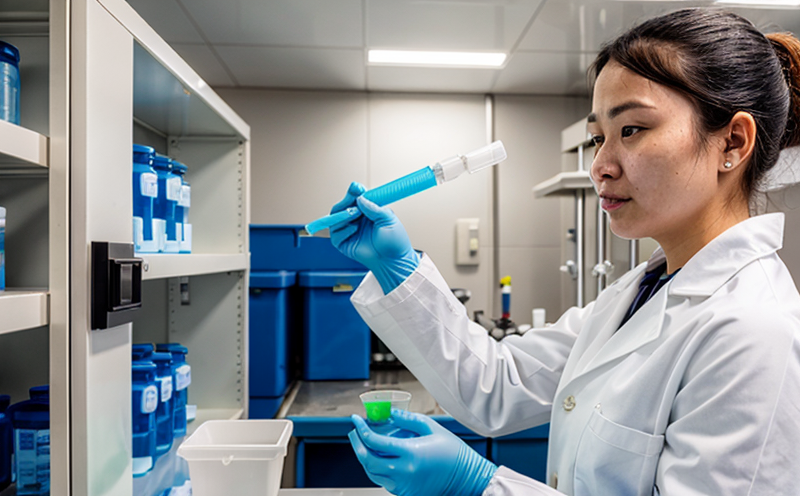USP Biofilm Formation Testing
The United States Pharmacopeia (USP) Biofilm Formation Testing is a critical procedure designed to evaluate the potential of microorganisms on surfaces within pharmaceutical manufacturing environments. This test ensures that products and equipment are free from biofilms, which can harbor bacteria, fungi, or other pathogens capable of causing contamination in sterile drug production. The primary objective of this testing aligns with USP chapter Monograph 1638, which specifies the methods for detecting and quantifying biofilm formation.
The procedure involves inoculating a surface with microorganisms, allowing them to adhere and form a biofilm. After incubation, the test assesses the presence and extent of biofilm growth using specific techniques such as staining or gravimetric analysis. The results determine whether the tested surfaces meet the stringent requirements outlined in the USP guidelines for biocompatibility.
Understanding the intricacies of biofilm formation is paramount in the pharmaceutical industry, especially given the increasing focus on quality assurance and patient safety. By eliminating biofilms from surfaces like equipment, packaging materials, or even within production lines, manufacturers can significantly reduce the risk of contamination during drug processing. This not only enhances product integrity but also ensures compliance with regulatory standards.
The process is particularly important in environments where sterility is essential, such as those involved in injectable drugs, biologics, and vaccines. It is a preventive measure aimed at minimizing the potential for cross-contamination that could compromise product efficacy or lead to adverse health outcomes.
Quality managers, compliance officers, R&D engineers, and procurement teams benefit greatly from this testing procedure. They can use the results to make informed decisions about equipment maintenance, sterilization protocols, and material selection. By adhering to USP guidelines, pharmaceutical companies ensure they meet the highest standards of quality assurance.
Why It Matters
Biofilm formation on surfaces within pharmaceutical manufacturing environments poses a significant risk to product integrity and patient safety. Microorganisms embedded in biofilms are notoriously difficult to remove through conventional cleaning methods, making them potential sources of contamination during production processes. This can result in the introduction of harmful pathogens into sterile drugs, leading to recalls, legal issues, and damage to brand reputation.
The USP Biofilm Formation Testing plays a crucial role in mitigating these risks by providing a systematic approach to detecting biofilm formation early on. It allows manufacturers to identify problem areas within their facilities, enabling proactive measures such as improved cleaning protocols or material substitutions. This not only enhances the overall quality of pharmaceutical products but also supports compliance with international standards like ISO 14644 and FDA regulations.
Furthermore, by incorporating biofilm testing into their quality assurance programs, companies can demonstrate their commitment to producing safe and effective drugs. Regulatory bodies such as the FDA often require evidence of adherence to such tests during inspections and audits, making USP Biofilm Formation Testing an essential component of a robust compliance strategy.
Why Choose This Test
- Comprehensive Risk Assessment: The test provides a thorough evaluation of biofilm formation across various surfaces in pharmaceutical facilities, offering insights into potential contamination risks.
- Regulatory Compliance: By adhering to USP guidelines, manufacturers ensure their processes meet the highest standards set by regulatory bodies like the FDA and EMA.
- Enhanced Product Quality: Eliminating biofilms from surfaces reduces the likelihood of product contamination, thereby enhancing overall drug quality.
- Data-Driven Decision Making: The test results provide actionable data that can be used to improve cleaning protocols, equipment design, and material selection.
The USP Biofilm Formation Testing is an indispensable tool for maintaining a clean and controlled environment in pharmaceutical manufacturing. It serves as a critical preventive measure against biofilm-related contamination issues, ensuring the production of safe, high-quality pharmaceutical products.
Use Cases and Application Examples
- In-Process Monitoring: Conducted during the early stages of drug manufacturing to identify any emerging biofilm issues before they become problematic.
- Facility Validation: Performed as part of facility validation protocols to ensure that all surfaces are capable of supporting biocompatible environments.
- New Material Evaluation: Used to assess the suitability of new materials for use in pharmaceutical manufacturing, ensuring their compatibility with biofilm formation testing standards.
Biofilm Formation Testing is a versatile tool applicable across various phases of drug development and production. Its application spans from routine facility maintenance to advanced research and development activities, making it an essential component of any quality assurance program in the pharmaceutical sector.
By leveraging this test, manufacturers can ensure that their facilities meet the stringent requirements set by regulatory bodies, thereby protecting both product integrity and patient safety.





